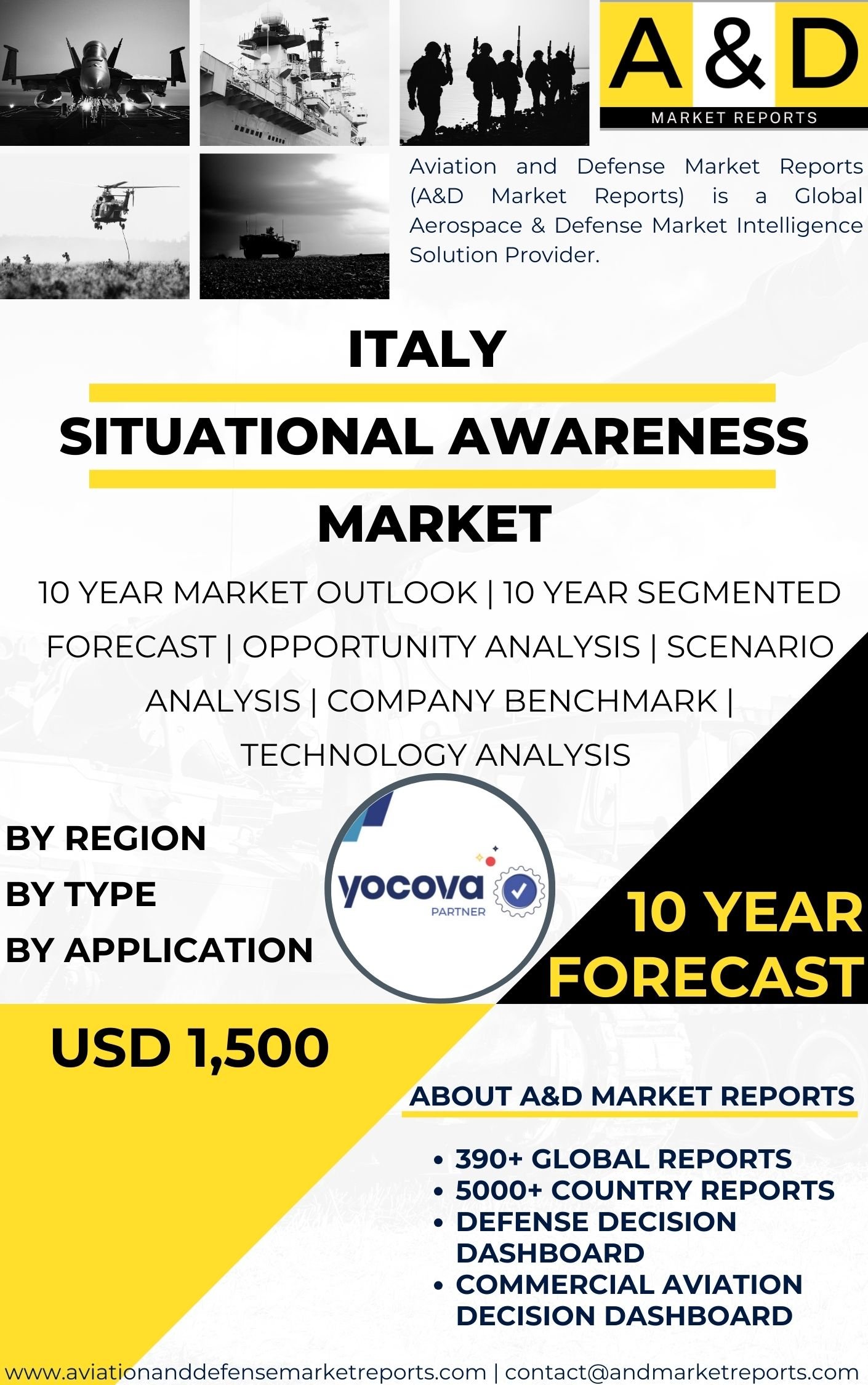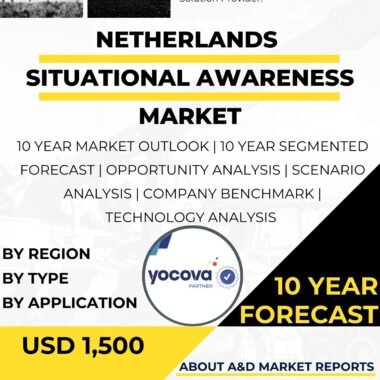Description
Italy?s situational awareness market has evolved into a multi-layered ecosystem that combines sensors, data fusion, command-and-control systems, communications, and human-machine interfaces to provide decision makers with a coherent, timely picture of operational environments across land, sea, air and cyber domains. Demand is driven by the country?s strategic priorities?homeland security, NATO interoperability, expeditionary deployments, maritime domain awareness in the Mediterranean and Arctic-adjacent waters, counter-terrorism and protection of critical infrastructure?each requiring rapid, accurate understanding of threats and opportunities. At the core of situational awareness capabilities are sensor suites: airborne electro-optical/infrared systems, maritime radars, coastal surveillance radars, acoustic arrays, ground surveillance radars, unmanned aerial systems, space-based imagery and a growing array of cyber and signals-intelligence sensors. Italy?s market reflects a mix of mature, platform-integrated systems on naval and air platforms and an expanding base of distributed, networked sensors for persistent monitoring. The value proposition is no longer limited to raw detection; modern investments emphasize multisensor fusion, automated target classification, predictive analytics and end-to-end decision support that compress the observe-orient-decide-act loop. This shift is driven by technological advances such as higher-resolution sensors, improved data links, secure software-defined radios, edge computing, machine learning for pattern recognition and automated cueing, and resilient distributed architectures that mitigate single-point failures. Integration is central: situational awareness systems must ingest heterogeneous streams?radar tracks, imagery, AIS, electronic support measures, human reports?and present synthesized, geolocated intelligence to commanders as a single common operational picture. Italy?s defense and security customers therefore place high value on systems engineering, middleware, standards-based interoperability and rigorous testing to ensure that disparate subsystems produce reliable, actionable outputs under stress. The civil-military interface is also a growth area. Capabilities developed for defense?maritime surveillance, border monitoring, emergency response coordination?are increasingly adapted to civilian uses such as search-and-rescue, environmental monitoring, port security and disaster response. The dual-use nature of situational awareness technologies creates additional commercial opportunities for Italian suppliers while complicating export control and data-governance considerations. Resilience and cyber-hardened design are critical market drivers in Italy: situational awareness must remain operational in contested electromagnetic environments, under cyber-attack, or when GPS signals are degraded. That concern has accelerated investment into alternative navigation and timing sources, anti-jam communications, encrypted data links and secure cloud-edge architectures that preserve data integrity and sovereignty. NATO and EU interoperability requirements shape procurement and R&D, pushing Italian providers to comply with coalition standards and to ensure common data models and exchange protocols. This need has fostered international partnerships and participation in multinational programs where Italian firms supply sensors, C2 systems or integration services. From an industrial perspective, the situational awareness market in Italy is characterized by a blend of well-established systems integrators, specialized SMEs in optics, radar, EW and AI, and research institutions that support sensor R&D and algorithm development. The market opportunity favors firms that can offer turnkey solutions?sensor packages plus resilient networks and analytic layers?because end users prioritize deployability, sustainability and lifecycle support. Training and human factors engineering remain important: decision-support systems must present complex data in intuitive formats that prevent information overload, and the market increasingly stresses simulation-based training and synthetic environments to validate tactics and workflows before deployment. Logistics and sustainment are long-term considerations: distributed sensor networks and deployed platforms require robust supply chains for spare parts, secure software updates, and local maintenance capability to minimize downtime. Environmental factors?operation in Mediterranean maritime climates, extreme cold for Arctic operations, and urban complexities?drive ruggedization and platform-specific customization. Looking ahead, the Italian situational awareness market will expand its focus on AI-enabled analytics, maritime-domain persistent sensing, autonomous sensor platforms (surface, subsurface, aerial), secure multi-domain data fabrics and greater civilian-military integration. The strategic prize for successful providers is substantial: governments want systems that reduce decision latency, lower operational risk, and provide a scalable response to hybrid threats, while private-sector actors can translate defense-grade capabilities into commercial products for ports, critical infrastructure and emergency services. Success will depend on technological excellence, interoperability, supply-chain resilience and the ability to demonstrate mission effectiveness in real-world operations.




